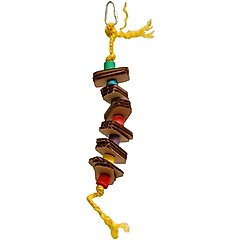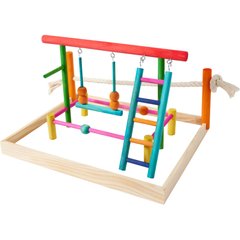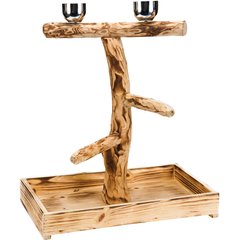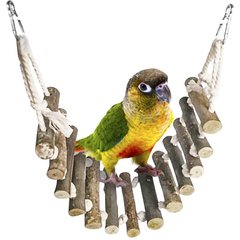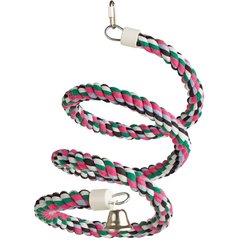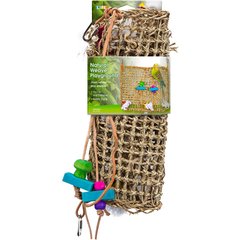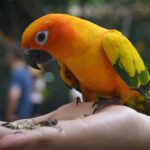Why Is My Bird Trying to Climb My Face?
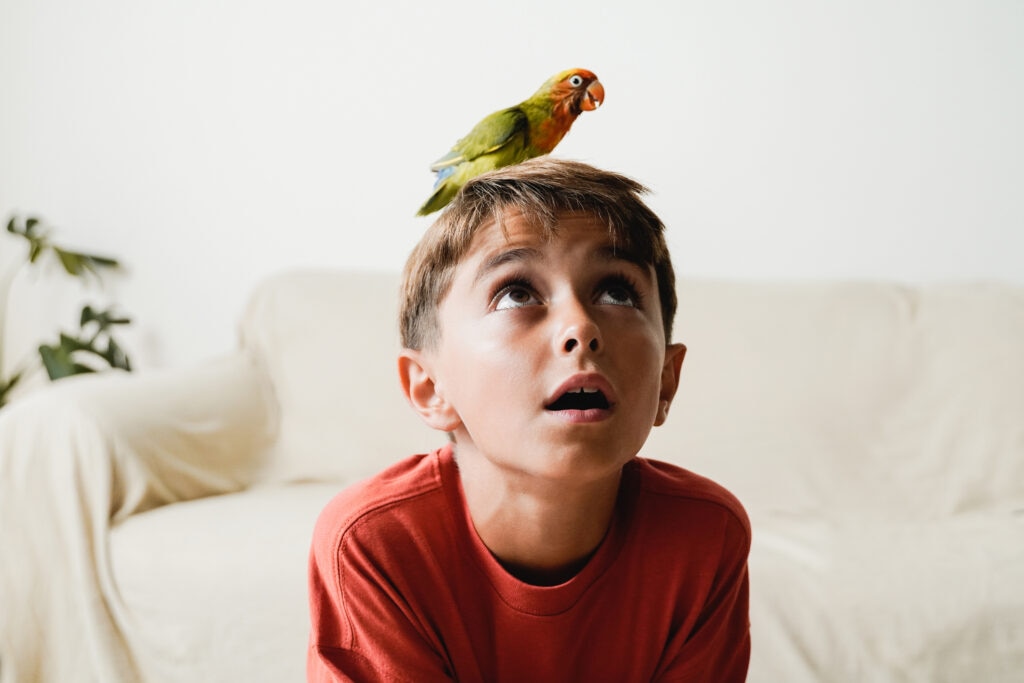
Photo by Vanessa Nunes/iStock / Getty Images Plus via Getty Images
You’re trying to relax with your pet bird nearby, but instead, you feel the flutter of feathers and little bird feet ascending your cheek like a climber attempting to tackle Everest. What started as quality out-of-cage time with your bird now has you asking yourself, “Why is my bird trying to climb my face?”
Here are some reasons why your pet bird might be attempting this, and the steps you can take to encourage healthier alternatives.
4 Reasons Why Your Bird Is Trying To Climb Your Face
1. Your Bird is Exploring
Flying isn’t the only way birds get around. Your bird might also try to climb your face while exploring. In the wild, birds spend a lot of their time climbing trees and hanging from branches, so climbing comes naturally to them.
Birds like to explore different textures. If your bird is on you, they might try to climb up your face to reach the hair on top of your head. Or they might try to climb down from your head onto your face to explore your facial features such as your eyelashes, eyebrows, nose, ears, and lips.
If you wear eyeglasses, a bird might climb onto your face to play with them. Young birds especially tend to be “beaky” and seek out different textures with their beaks.
2. Your Bird Wants to Bond With You
Ever had your bird try to climb your face while you eat? If your bird bobs their head trying to get you to feed them or they try to take food from your mouth, this is often a sign of hormonal behavior.
Conversely, your bird might view you as a potential mate and will climb up your face in an attempt to regurgitate food to you. This signals mating behavior.
“Budgies, especially males, will orientate toward your mouth,” says Pamela Clark, an IAABC-certified parrot behavior consultant based in Salem, Oregon. “It’s not just about food. Being close is a hormonal thing; they want to be as close as they can be.”
Your face also has features that are similar to a bird’s feathers—your hair. Preening another bird’s feathers is a bonding activity among flockmates. This instinct to preen might be why your pet bird climbs your face—so they can preen your bangs, eyelashes, eyebrows, beard, mustache, or sideburns.
3. Your Bird Wants to Feel Secure
Birds are prey animals, and for some species, being part of a flock helps birds feel secure—after all, there is safety in numbers. If your bird views you as part of their flock, they might climb up your face for the same reason they might want to perch on your shoulder—for the security of being close to you.
Some pet birds, especially small birds like conures and cockatiels, are inclined to tuck themselves under their trusted person’s chin, or perch under their nose. According to Clark, your bird might also be drawn to your nose or mouth because of the warmth and humidity of your breath.
4. Your Bird Is Stressed
If your bird feels stressed, they might fly to a familiar spot in a panic. According to Clark, they’re looking for the tallest spot available—which may be you!
Landing on the head or near the face can become a habit if you allow your bird to spend time there, Clark adds.
Why You Shouldn’t Let Your Bird Climb Your Face
Aside from the potential risks of scrapes and bites to your face, there are other reasons why you should stop your bird from climbing on your face.
- Allowing your bird to be near your mouth can potentially make them sick. “First, the food you’re eating is probably something the bird should not be eating,” cautions Clark. “And second, there could be a danger of bacterial infection.”
- You will have a harder time reading your bird’s body language—and your bird will have a harder time recognizing your visual cues—if they’re climbing your face. “Birds orientate toward our faces to know what’s going to happen next,” Clark explains. “So, for communication purposes, it’s much better to have a bird on a perch away from your face.”
- You may encounter behavioral problems—a bird sitting above your eye height is exerting dominance over you, which can lead to behavioral problems.
Clark says to stick with teaching the bird simple commands. She also warns against fear-inducing tactics like wearing a hat or sunglasses to scare your bird away from your face, as this can be trust-destroying.
How To Stop a Bird from Climbing Your Face
First and foremost, avoid making climbing your face an option, says Ann Brooks, co-founder of the Phoenix Landing Foundation and an IAABC-certified behavior consultant. Here are some ways to stop a bird from climbing your face:
Create Safe Areas for Your Bird To Climb
Offer a favorite bird treat or shreddable toys in these more appropriate spots.
Recommended Products
For example, setting up a play gym or T-stand establishes a tangible boundary for your bird.
Recommended Products
Provide a Perch Spot for Your Bird
An appropriate perch spot is also more conducive to training, as your bird can better cue off your body language, and you can get a better read on their body language.
Recommended Product
“In the science of behavior, we’re always going toward something we want and away from something we don’t want,” says Brooks. “You always want your bird to go toward the thing you want them to go to—in this case, a perch or play stand filled with enrichment opportunities. Make it more motivating than climbing your face.”
Offer Bird Climbing Toys
Creating safe and enriching climbing opportunities is always preferable to allowing your bird to climb on you or your face. Fortunately, there are many ways to meet your bird’s desire to climb.
Consider these options for healthy bird climbing that’s not on your face!
- Rope ladders
Recommended Product
- Rope boing perches
Recommended Product
- Climbing nets
Recommended Product
- Swinging toys
Recommended Product
This content was medically reviewed by Sandra Mitchell, DVM.


